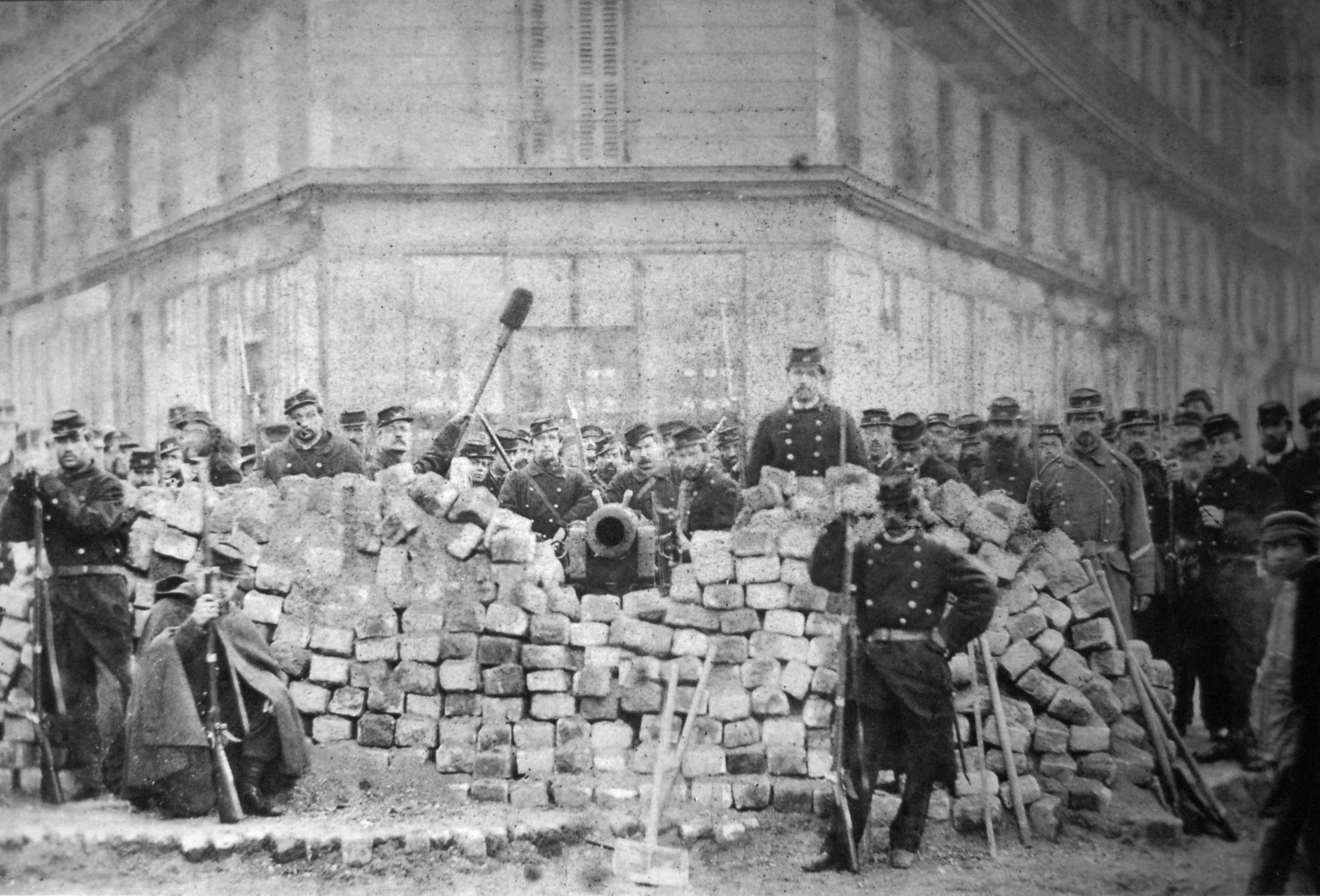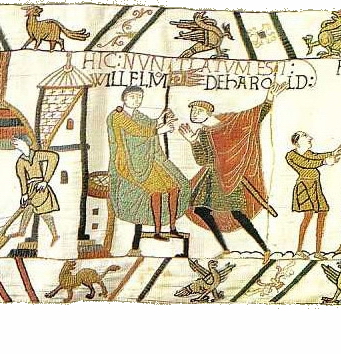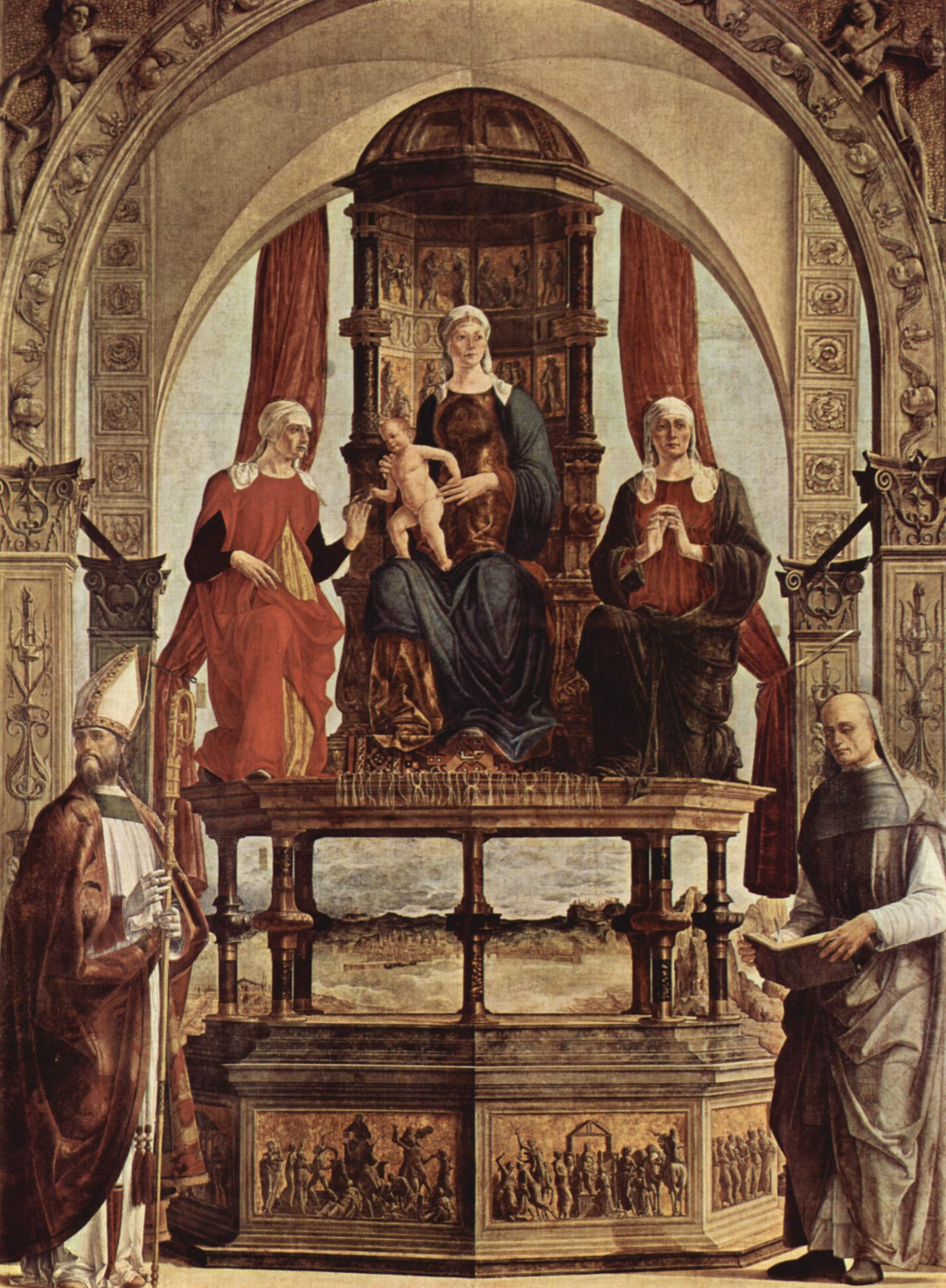|
Guido Da Velate
Guido da Velate (also Guy or Wido) (died 1071) was the Archbishop of Milan from 1045 until his death, though he had simoniacally abdicated in 1067. He had been chosen as successor to Aribert by the people in opposition to the choice of the noblesse and confirmed as archbishop by the Emperor Henry III. Guido was the archbishop of Milan at a time when the Pataria was gaining force in the city. Riot and unrest was a daily affair and Guido is reputed to have had a hand in much of it. He opposed the Papal reforms and the Patarines who sought to outlaw clerical marriage and concubinage; he was a simoniac himself. Because he also refused to abide by the compromise of 1044, which would have limited his powers, he found himself at odds with the communards and the lesser nobility as well as the reform school. After the death of Henry III in 1056, Hildebrand, Anselm of Baggio, and Peter Damian were sent to settle matters in Milan, but to little avail. The peace they brokered was broken inc ... [...More Info...] [...Related Items...] OR: [Wikipedia] [Google] [Baidu] |
Archbishop Of Milan
The Archdiocese of Milan ( it, Arcidiocesi di Milano; la, Archidioecesis Mediolanensis) is a Latin Church ecclesiastical territory or archdiocese of the Catholic Church in Italy which covers the areas of Milan, Monza, Lecco and Varese. It has long maintained its own Latin liturgical rite usage, the Ambrosian rite, which is still used in the greater part of the diocesan territory. Among its past archbishops, the better known are Ambrose, Charles Borromeo, Pope Pius XI and Pope Paul VI. The Archdiocese of Milan is the metropolitan see of the ecclesiastical province of Milan, which includes the suffragan dioceses of Bergamo, Brescia, Como, Crema, Cremona, Lodi, Mantova, Pavia, and Vigevano."Archdiocese of Milano " '' |
Simony
Simony () is the act of selling church offices and roles or sacred things. It is named after Simon Magus, who is described in the Acts of the Apostles as having offered two disciples of Jesus payment in exchange for their empowering him to impart the power of the Holy Spirit to anyone on whom he would place his hands. The term extends to other forms of trafficking for money in "spiritual things". Origin The purchase or sale of ecclesiastical office was condemned from the fifth century, but it was only in the sixth century that it was associated with the figure of Simon Magus in the Book of Acts. Key in making this association was Pope Gregory I, who labelled such exchanges as the "simoniac heresy". Simony in the Middle Ages Although considered a serious offense against canon law, simony is thought to have become widespread in the Catholic Church during the 9th and 10th centuries. In the eleventh century, it was the focus of a great deal of debate. Central to this debat ... [...More Info...] [...Related Items...] OR: [Wikipedia] [Google] [Baidu] |
Aribert, Archbishop Of Milan
Aribert (or Heribert) (Italian: ''Ariberto da Intimiano'', Lombard: ''Aribert de Intimian'') ( Intimiano, between 970 and 980 - Milan, 16 January 1045) was the archbishop of Milan from 1018, a quarrelsome warrior-bishop in an age in which such figures were not uncommon. Biography Aribert went to Konstanz in June 1025, with other bishops of Northern Italy, to pay homage to Conrad II of Germany, the beleaguered founder of the Salian dynasty. There, in exchange for privileges, he agreed to crown Conrad with the Iron Crown of Lombardy, which the magnates had offered to Odo of Blois. This he did, on 26 March 1026, at Milan, for the traditional seat of Lombard coronations, Pavia, was still in revolt against imperial authority. He journeyed to Rome a year later for the imperial coronation of Conrad by Pope John XIX on 26 March 1027; at a synod at the Lateran he negotiated a decision of the precedence of the archdiocese of Milan over that of Ravenna. He subsequently joined an imper ... [...More Info...] [...Related Items...] OR: [Wikipedia] [Google] [Baidu] |
Emperor Henry III
Henry III (28 October 1016 – 5 October 1056), called the Black or the Pious, was Holy Roman Emperor from 1046 until his death in 1056. A member of the Salian dynasty, he was the eldest son of Conrad II and Gisela of Swabia. Henry was raised by his father, who made him Duke of Bavaria in 1026, appointed him co-ruler in 1028 and bestowed him with the duchy of Swabia and the Kingdom of Burgundy ten years later in 1038. The emperor's death the following year ended a remarkably smooth and harmonious transition process towards Henry's sovereign rule, that was rather uncharacteristic for the Ottonian and Salian monarchs. Henry succeeded Conrad II as Duke of Carinthia and King of Italy and continued to pursue his father's political course on the basis of ''virtus et probitas'' (courage and honesty), which led to an unprecedented sacral exaltation of the kingship. In 1046 Henry ended the papal schism, was crowned Emperor by Pope Clement II, freed the Vatican from dependence on the Roman ... [...More Info...] [...Related Items...] OR: [Wikipedia] [Google] [Baidu] |
Pataria
The ''pataria'' was an eleventh-century movement focused on the city of Milan in northern Italy, which aimed to reform the clergy and ecclesiastic government within the city and its ecclesiastical province, in support of papal sanctions against simony and clerical marriage. Those involved in the movement were called ''patarini'' (singular ''patarino''), patarines or patarenes, a word chosen by their opponents, the etymology of which is unclear. The movement, associated with urban unrest in the city of Milan, is generally considered to have begun in 1057 and ended in 1075. The Pataria also came to oppose the power of the papacy and its moral corruptions. The Patarines were declared a heretical sect. They are considered by some as a precursor to the Protestant Reformation. History Early in the year 1057, a preacher named Ariald arrived in the city of Milan and began to preach against the Milanese clerics' custom of marrying. It is possible that he took advantage of the absence at ... [...More Info...] [...Related Items...] OR: [Wikipedia] [Google] [Baidu] |
Gregorian Reform
The Gregorian Reforms were a series of reforms initiated by Pope Gregory VII and the circle he formed in the papal curia, c. 1050–80, which dealt with the moral integrity and independence of the clergy. The reforms are considered to be named after Pope Gregory VII (1073–85), though he personally denied it and claimed his reforms, like his regnal name, honoured Pope Gregory I. Overview During Gregory's pontificate, a conciliar approach to implementing papal reform took on an added momentum. Conciliarism properly refers to a later system of power between the Pope, the Roman curia, and secular authorities. During this early period, the scope of Papal authority in the wake of the Investiture Controversy entered into dialog with developing notions of Papal supremacy. The authority of the emphatically "Roman" council as the universal legislative assembly was theorised according to the principles of papal primacy contained in ''Dictatus papae''. Gregory also had to avoid the ... [...More Info...] [...Related Items...] OR: [Wikipedia] [Google] [Baidu] |
Communard
The Communards () were members and supporters of the short-lived 1871 Paris Commune formed in the wake of the French defeat in the Franco-Prussian War. After the suppression of the Commune by the French Army in May 1871, 43,000 Communards were taken prisoner, and 6,500 to 7,500 fled abroad. Milza, 2009a, pp. 431–432 The number of Communard soldiers killed in combat or executed afterwards during the week has long been disputed: Prosper-Olivier Lissagaray put the number at twenty thousand, but estimates by more recent historians put the probable number between ten and fifteen thousand men. 7,500 were jailed or deported under arrangements which continued until a general amnesty during the 1880s; this action by Adolphe Thiers forestalled the proto-communist movement in the French Third Republic (1871–1940). The Franco-Prussian War and the Paris Commune The working class of Paris were feeling ostracized after the decadence of the Second Empire and the Franco-Prussian Wa ... [...More Info...] [...Related Items...] OR: [Wikipedia] [Google] [Baidu] |
Pope Gregory VII
Pope Gregory VII ( la, Gregorius VII; 1015 – 25 May 1085), born Hildebrand of Sovana ( it, Ildebrando di Soana), was head of the Catholic Church and ruler of the Papal States from 22 April 1073 to his death in 1085. He is venerated as a saint in the Catholic Church. One of the great reforming popes, he is perhaps best known for the part he played in the Investiture Controversy, his dispute with Emperor Henry IV that affirmed the primacy of papal authority and the new canon law governing the election of the pope by the College of Cardinals. He was also at the forefront of developments in the relationship between the emperor and the papacy during the years before he became pope. He was the first pope in several centuries to rigorously enforce the Western Church's ancient policy of celibacy for the clergy and also attacked the practice of simony. Gregory VII excommunicated Henry IV three times. Consequently, Henry IV would appoint Antipope Clement III to oppose him in the polit ... [...More Info...] [...Related Items...] OR: [Wikipedia] [Google] [Baidu] |
Anselm Of Baggio
Pope Alexander II (1010/1015 – 21 April 1073), born Anselm of Baggio, was the head of the Roman Catholic Church and ruler of the Papal States from 1061 to his death in 1073. Born in Milan, Anselm was deeply involved in the Pataria reform movement. Elected according to the terms of his predecessor's bull, ''In nomine Domini'', Anselm's was the first election by the cardinals without the participation of the people and minor clergy of Rome. He also authorized the Norman Conquest of England in 1066. Early life and work Anselm was born in the parish of Cesano Boscone in the town of Corsico some 7 km (5 mi) from Milan of a noble family. The family took its name from Baggio. a suburb of Milan, where the family held the office of "captain". According to the ''Liber pontificalis'', his father's name was Anselmus or Ardericus. Contemporary sources do not provide any information on where Anselm might have obtained his education. It was traditionally believed that An ... [...More Info...] [...Related Items...] OR: [Wikipedia] [Google] [Baidu] |
Peter Damian
Peter Damian ( la, Petrus Damianus; it, Pietro or '; – 21 or 22 February 1072 or 1073) was a reforming Benedictine monk and cardinal in the circle of Pope Leo IX. Dante placed him in one of the highest circles of '' Paradiso'' as a great predecessor of Francis of Assisi and he was declared a Doctor of the Church on 27 September 1828. His feast day is 21 February. Early life Peter was born in Ravenna around 1007, the youngest of a large but poor noble family. Orphaned early, he was at first adopted by an elder brother, who ill-treated and under-fed him while employing him as a swineherd. After some years, another brother, Damianus, who was archpriest at Ravenna, had pity on him and took him away to be educated. Adding his brother's name to his own, Peter made such rapid progress in his studies of theology and canon law, first at Ravenna, then at Faenza, and finally at the University of Parma, that, around the age of 25, he was already a famous teacher at Parma a ... [...More Info...] [...Related Items...] OR: [Wikipedia] [Google] [Baidu] |
Gotofredo Da Castiglione
Gotofredo da Castiglione (sometimes given as Gotofredo II to distinguish him from Gotofredo I, Archbishop of Milan) was an Italian anti-bishop from 1070 to 1075, appointed by Henry IV, Holy Roman Emperor to the office of Bishop of Milan. This began the Investiture Controversy, whereby Pope St. Gregory VII excommunicated Gotofredo over the issue of lay investiture. Gotofredo was eventually recanted as bishop after the Walk to Canossa The Humiliation of Canossa ( it, L'umiliazione di Canossa), sometimes called the Walk to Canossa (german: Gang nach Canossa/''Kanossa'') or the Road to Canossa, was the ritual submission of the Holy Roman Emperor, Henry IV to Pope Gregory VII ... in 1077. 11th-century Italian clergy Archbishops of Milan Investiture Controversy People excommunicated by the Catholic Church Year of death missing Year of birth missing {{RC-archbishop-stub ... [...More Info...] [...Related Items...] OR: [Wikipedia] [Google] [Baidu] |
Emperor Henry IV
Henry IV (german: Heinrich IV; 11 November 1050 – 7 August 1106) was Holy Roman Emperor from 1084 to 1105, King of Germany from 1054 to 1105, King of Italy and Burgundy from 1056 to 1105, and Duke of Bavaria from 1052 to 1054. He was the son of Henry III, Holy Roman Emperor—the second monarch of the Salian dynasty—and Agnes of Poitou. After his father's death on 5 October 1056, Henry was placed under his mother's guardianship. She made grants to German aristocrats to secure their support. Unlike her late husband, she could not control the election of the popes, thus the idea of the "liberty of the Church" strengthened during her rule. Taking advantage of her weakness, Archbishop Anno II of Cologne kidnapped Henry in April 1062. He administered Germany until Henry came of age in 1065. Henry endeavoured to recover the royal estates that had been lost during his minority. He employed low-ranking officials to carry out his new policies, causing discontent in Saxony and Thuri ... [...More Info...] [...Related Items...] OR: [Wikipedia] [Google] [Baidu] |






